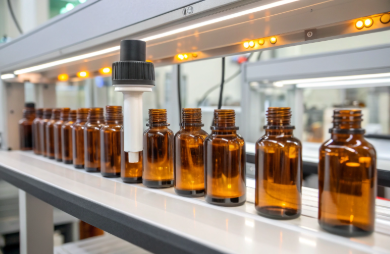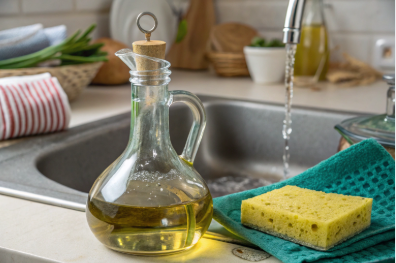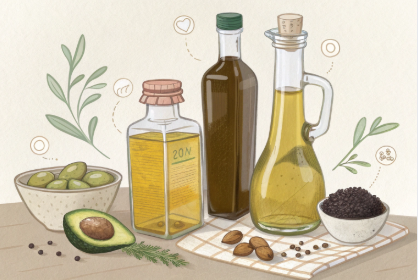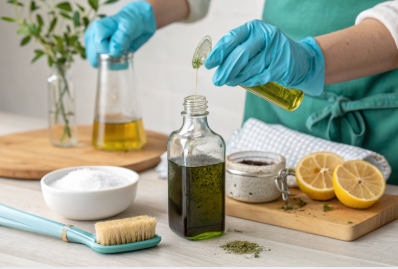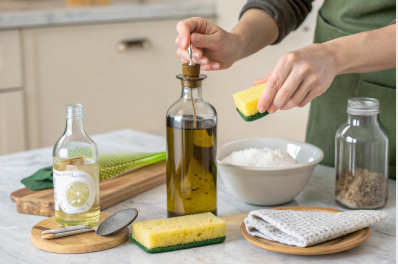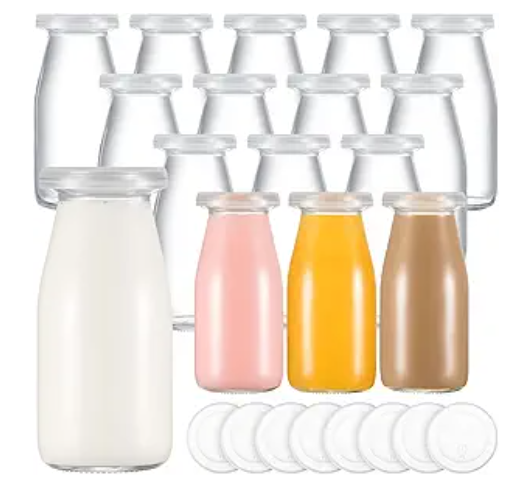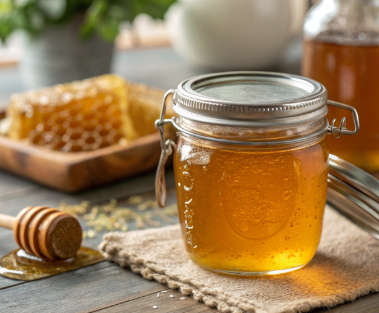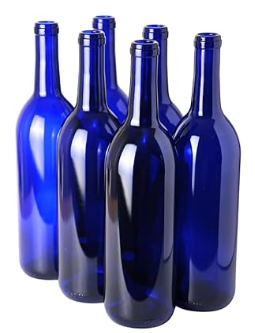Cleaning an olive oil bottle isn’t as easy as it sounds—residue, cloudiness, and strong aromas don’t go away with just water.
To clean an olive oil bottle thoroughly, you must degrease, deodorize, and sanitize the interior using warm soapy water, vinegar, or baking soda—then dry completely before reuse.
Many of our clients, especially those in gourmet or wellness brands, face the same issue: how do you keep olive oil bottles clean and safe for reuse or refilling? This guide will walk you through the best practices—whether you’re prepping glass for a refill or maintaining pristine packaging for resale.
How do you clean the inside of an oil bottle?
Oil clings to everything—especially the inside of narrow bottles.
To clean the inside of an olive oil bottle, rinse it with warm soapy water, follow with a vinegar flush to cut grease, then rinse again and air dry.
Step-by-Step Guide for Interior Cleaning
-
Rinse with warm water: This loosens surface oil.
-
Add dish soap + water: Shake vigorously to break down residues.
-
Vinegar rinse: Pour in white vinegar and shake; this neutralizes odors and dissolves leftover oil.
-
Bottle brush: Use a long, narrow brush if residue remains.
-
Final rinse: Use filtered water to avoid hard-water spots.
-
Air dry upside down: Prevents water pooling or bacterial growth.
For industrial cleaning, PauPack offers ultrasonic rinsing and sterilization for bulk shipments—ideal for food-grade and cosmetic clients who need clean, ready-to-fill containers.
Should you wash an olive oil bottle?
It’s tempting to just refill—but that shortcut can spoil the next batch.
Yes, you should always wash olive oil bottles before refilling to avoid cross-contamination, rancidity, or bacterial growth.
Risks of Reusing Without Cleaning
| Issue | Cause | Impact |
|---|---|---|
| Rancid aroma | Old oil residue | Ruins product quality |
| Bacterial growth | Moisture + organic matter | Health risk |
| Flavor contamination | Mixed oils or herbs | Alters original flavor |
| Consumer distrust | Visible dirt/cloudiness | Damages brand image |
At PauPack, we recommend cleaning even new bottles before use—especially if they’ve been in storage or transit. That’s why our production includes optional bottle sterilization, shrink-wrap sealing, and dust-free packaging for peace of mind.
How to reuse an olive oil bottle?
Sustainability meets style when bottles are built to last.
To reuse an olive oil bottle safely, clean it thoroughly, inspect for damage, and sterilize before adding new oil. Opt for food-grade, reusable glass.
Reuse Tips for B2B Brands
-
Choose the right material: Glass is durable and non-reactive—perfect for reuse.
-
Label clearly: Use water-resistant, removable labels that won’t leave residue.
-
Batch test: Always sample the reused bottle before a full refill line.
-
Use tamper-evident caps: Gives customers reassurance about product safety.
PauPack offers amber and green glass olive oil bottles with easy-to-remove labels, food-safe seals, and refill-friendly designs. Our clients often add instructions for customers to clean and reuse—turning sustainability into brand loyalty.
How to clean an olive oil spray bottle?
Spray heads are the hardest part to clean—but the most critical.
To clean an olive oil spray bottle, flush the bottle and nozzle with warm soapy water, followed by a vinegar rinse. Repeat until spraying is smooth and residue-free.
Cleaning the Spray Mechanism
| Part | Cleaning Step |
|---|---|
| Bottle body | Same process as standard oil bottle |
| Spray tube | Flush by spraying warm soapy water through it |
| Nozzle | Soak in vinegar to dissolve clogs |
| Cap threads | Scrub with a soft brush to remove build-up |
For commercial lines, PauPack offers detachable spray heads and modular sprayer assemblies to make cleaning and replacement easier. Our industrial clients love these features for refill stations or “closed-loop” product lines.
How do you remove olive oil residue from a bottle?
Olive oil sticks—scrubbing alone won’t solve it.
To remove olive oil residue, use a degreaser such as baking soda paste, warm dish soap, or vinegar. Let it soak before scrubbing.
Effective Degreasing Combinations
-
Baking soda + hot water: Creates a mild abrasive action.
-
White vinegar soak: Dissolves fat and removes odor.
-
Dish soap + rice grains: Acts as both surfactant and gentle scrub.
-
Lemon juice: Natural degreaser and deodorizer.
Avoid harsh chemical cleaners—they can leave harmful residues. PauPack supports clients with refill systems and bottle kits that come pre-cleaned or coated for easier degreasing.
Why is my olive oil bottle cloudy?
Cloudiness isn’t always dirt—but it’s never a good sign.
A cloudy olive oil bottle usually results from oil residue reacting with minerals in water, improper drying, or leftover soap.
Causes of Cloudiness
| Reason | Description |
|---|---|
| Mineral deposits | From hard tap water |
| Soap film | Incomplete rinsing |
| Old oil film | Leftover from previous contents |
| Mold or biofilm | From poor drying or contamination |
How to Fix It
-
Use distilled water for the final rinse.
-
Dry completely before sealing—any trapped moisture encourages clouding.
-
Check bottle material—some low-quality glass may haze permanently.
Our PauPack bottles are made from high-clarity borosilicate or soda-lime glass, offering chemical resistance and minimal haze even after repeated use.
Conclusion
A clean olive oil bottle isn’t just about aesthetics—it’s about safety, brand integrity, and product performance. At PauPack, we help food, wellness, and beauty brands maintain clean, refill-ready packaging with premium materials and precision cleaning advice. Ready to upgrade your packaging hygiene? Let’s bottle something better.




